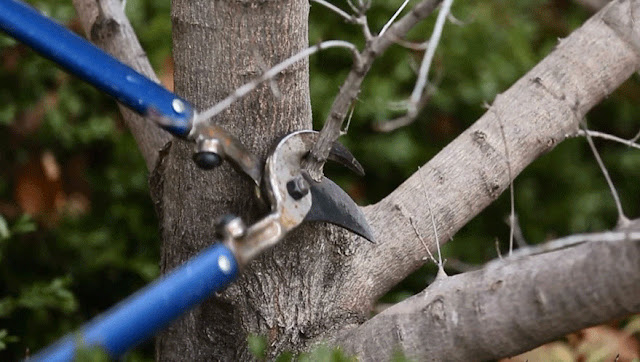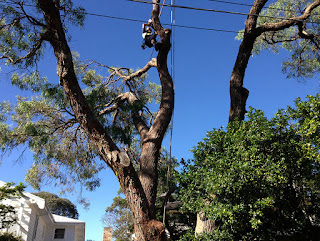Perfect Pruning of the Trees is Essential Now
The pruning time depends among
other things on the purpose of the pruning, but as a general rule, trees are
preferably pruned in late spring or summer when they are fully in leaf. This
allows the tree to respond immediately to the injury in order to prevent
infections. That is - contrary to what is often thought - not during his winter
rest, but during the growing season. Then the tree can actively lock wounds and
immediately start wound overgrowth.
Although there are still some advantages to
pruning in winter: there is less work in this period and, because there are no
leaves on the trees, you have a better view of the work and there is less
pruning waste. In the case of strongly locking trees, such as oak, few problems
are to be expected with correct winter pruning, although summer pruning is also
preferable. What you certainly should never do is prune when it is freezing or
when frost is announced. If pruned during the growing season, the breeding
season of the birds must be taken into account.
It is better not to prune
during the sprouting and falling of the leaves, so as not to burden the tree
unnecessarily.
A number of tree species are
susceptible to 'bleeding'. It concerns water that is 'pushed' out of the wood
tissue by root pressure. The risk of bleeding exists from the moment of autumn
discoloration until the tree is completely in leaf. It is therefore recommended
to only prune these species in the summer.
Do
not confuse bleeding after pruning with mucus or bleeding disorder, both of
which are due to an infection.
Since the pruning time also
affects the extent to which regrowth may be expected, the pruning time is also
determined by the purpose of the pruning. Winter pruning produces more new
shoots from sleeping or adventitious buds, especially when it is heavily
pruned. So planting trees always happens in winter. If this type of pruning
were to take place during the summer, the probability of the tree dying is very
high; it then has too few energy reserves to restore its leaf mass. Most fruit
trees also need winter pruning to produce as much fruit as possible. Most other
pruning techniques can be performed better in the summer to avoid the formation
of water lock and to reduce the risk of infections. Water trimming is best done
in the summer. Then the regrowth is minimal. Follow us on: Facebook
Pruning
technique
When pruning, the natural processes
in the tree must be taken into account as much as possible. By pruning
correctly, the natural locking and overgrowth process is optimal. There is only
one correct place to cut away a branch: right behind the branch collar, the
transition zone between trunk and branch. The branch collar, which may or may
not be thickened, contains both branch and stem tissue. If it is damaged during
pruning, not only branch tissue is removed, but a stem wound is also made. This
causes infection and in rotting of the trunk. The branch collar can be seen
more clearly in some species than in others and is easier to find in some
branches than in others.
Branch
Tips:
Never prune more than 20% of
the leaf volume in one pruning session. Otherwise, you balance the balance between
root system and crown too much and the tree will react by forming new shoots on
the wounds.






Comments
Post a Comment